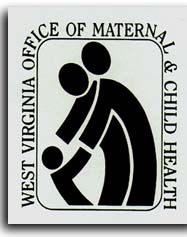
THE PROBLEM:
There are multiple compelling reasons to provide continued
support for subsidized Family Planning Program services:
Unintended Pregnancy:
- Nearly 60% of all U.S. pregnancies are unintended, either mistimed or
unwanted altogether.(1)
- Approximately 56% of pregnancies in West Virginia are unintended
(women wanting to be pregnant sooner, later and not at all.(2)
- Unintended pregnancy is not just a problem of teenagers; Women of all
socioeconomic, marital status, and age groups are at risk of unintended pregnancy. Women
aged 18-29 are at highest risk of unintended pregnancy.(3)
- Unintended pregnancy is associated with insufficient participation in
prenatal care, smoking and drinking during pregnancy, and low birthweight.(4)
Early Sexual Activity:
Early sexual activity is strongly associated with unintended
pregnancy, sexually transmitted diseases, and negative effects on social, physiological,
and psychological development. The following data offer startling insight into the sexual
activity of West Virginia youth:
- In 1995, 61% of WV high school students reported they had engaged in
sexual intercourse.(5)
- In 1995, 11% of WV high school students reported they had sexual
intercourse for the first time prior to age 13.(6)
- The number of students who reported being currently sexually active
(had sexual intercourse during the three month period prior to the survey) decreased from
50% in 1990 to 45% in 1995.(7)
- There is a strong association between a mother's age at first birth
and poverty and a mother's age at first birth and later receipt of welfare.(8)
Adolescent mothers are at increased risk of dropping out of school, unemployment, and
long-term welfare dependency; they are also less likely to marry and more likely to have
larger families.(9)
- The number of births to teenage mothers decreased by 106
(2.8%) in 1994. The percentage of total births decreased from 17.6% in 1993 to 17.4% in
1994. The significantly lower fertility rate among older women, however, resulted in
teenage births continuing to constitute a higher proportion of total births than is found
nationally (12.7 in 1992).(10)
Fertility
- The 1994 U.S. fertility rate of 67.1 live births per 1,000 women aged
15-44 was 1.8% lower than the 1993 rate (68.3). West Virginia's fertility rate decreased
from 53.9 in 1993 to 53.1 in 1994. The fertility rate among women aged 15-19 in West
Virginia was 7% lower than that among young women in the U.S. (54.3 vs. 58.4). The
fertility rate among women aged 20-44, however, was 25.5% lower in the state than in the
nation (52.9 vs. 71.0).(11)
- In both West Virginia and the United States, the number and
percentage of live births occurring out of wedlock has risen steadily during the past
decade. Approximately three out of every ten (30.2%) of all West Virginia resident births
in 1994 were to unwed mothers. The percentage of teenage births to unmarried mothers in
the state increased from 59.6% in 1993 to 62.8% in 1994.(12)
Top of page || Home

